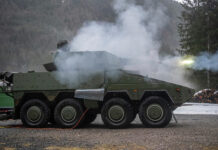Effective air defense is based on an integrated and coordinated approach including airborne (AEW or tethered radars), active and passive ground based sensors (radar, IR scanners, ESM), command centers and “shooters” of various types. The air defense network usually includes the surveillance and control of the protected airspace, projection of airpower for air defense missions, wide area air defense at medium and high altitude and site point air defense, covering medium and low altitudes. Each of these elements utilizes typical weapon systems, sensors and command and control facilities designed to meet the specific environmental and tactical scenario.
This article will cover the medium – low altitude point and area defense systems. Wide area air defense systems will be covered in a future article. The systems designed for medium and low level defenses, usually referred to as point defense systems and SHOrt Range Air Defense systems (SHORAD), employ various types of heat seeking, radar guided and command to line of sight guided missiles, augmented by rapid firing radar/EO directed automatic guns, for close-in defense. During the 1970s, most SHORAD systems relied on short-medium range, medium altitude Surface to Air Missile (SAM) systems, such as the Russian SA-3, and SA-6, US Hawk and Chaparral and the Franco – German Roland and Crotale Surface to Air Missiles.
The low altitude defense of mobile forces was maintained by manual or radar directed guns, which were later improved with the introduction of radar directed guns such as the Russian ZSU-23/4 (Shilka) 23mm quad automatic Self Propelled Anti-Aircraft (SPAA) gun, US M-163 Vulcan that utilized the 6x20mm Gatling gun, and the German Gepard 2x35mm SPAA. Protection of large area and strategic sites was maintained by air defense guns such as the Swiss Skyguard radar directed gun system and Russian 23, 37, 57 and 85mm guns. During the 1970s and 1980s, at the peak of the cold war, the combination of guns and missiles evolved as means for the protection of mobile forces in the battlefield. For the first time, an effective multi-target engagement system was introduced, utilizing an integrated defense concept, where guns, missiles and radars of various types were mutually covering each other to provide an effective air defense “umbrella”. This concept was later complemented by the evolution of high performance, compact short range missiles, such as the Starstreak, Mistral, Stinger in the west and the SA-8 and SA-19 in the East. With these missiles, advanced VSHORAD systems evolved during the late 1980s and 1990s, offering means of autonomous escort for mobile forces, protecting primarily from direct attack by attack helicopters and close air support assets.
Additional parts of this article:
- Mobile Short Range Air Defense Systems
- Modern Air Defense Concepts
- SHORAD Transformation
- Net Centric Air Defense Systems













